An articulation is a site where two or more bones form a union. Therefore, an articulation is a joint. Articulations can be immovable (sutures), slightly movable (between vertebrae), or moveable (the movement of the mandible).
A synovial joint is a moveable articulation and will be the focus of this chapter. A joint capsule surrounds synovial joints, and it contains synovial fluid. Synovial fluid bathes the moveable joints, lubricating the bones to ensure smooth, frictionless movement. Some joints, such as the knee joint, have an extra layer of protective tissue. In load-bearing joints, thick cartilage pads absorb shock, i.e., the intervertebral discs and the menisci in the knee joints.
Ligaments and tendons comprise high tensile strength collagen fibers. The difference between the two is their function. A tendon connects a muscle to a bone, and a ligament connects bones at joints. Ligaments prevent synovial joints from hyperextending via their high tensile strength and lack of stretchability. If ligaments stretch too much, a sprain will occur, and they will snap if stretched beyond 6% of their length.
The Six Types of Synovial Joints
- Ball-and-socket joint
- Provides movement in all directions, as well as rotational movement
- Example: head of the femur articulates with the acetabulum of the pelvic girdle
- Condyloid joint
- Can move in two directions but cannot rotate
- Example: knuckle joint (metacarpal articulating with a phalange)
- Hinge joint
- Can only move in one direction and cannot rotate
- Example: the elbow (ulna articulating with the humerus)
- Pivot
- Movement limited to rotation
- Example: the movement of the axis vertebra
- Saddle joint
- Allows two directions of movement and cannot rotate
- Unique to primates
- Example: thumb metacarpal articulating with a carpal bone
- Gliding or Plane joint
- Nearly flat surface that allows sliding or back-and-forth movement
- Example: the articulation between the carpals or tarsals
Here are a few more locations of synovial joints.
Joint Movements
The direction in which a bone or group of bones can move depends on the articulation. The ball-and-socket joint has the greatest range of motion, and hinge joints are the most restrictive. Below is a list of the possible types of movements:
| Movement Name | How It Moves the Skeleton | Example | Possible Joints Involved in the Movement |
|---|---|---|---|
| Flexion | Involves a decrease in the angle between the articulating bones. | 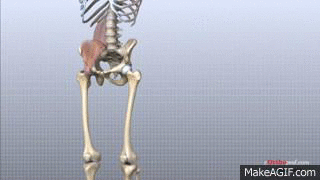 | Hinge Ball-and-socket Condyloid Saddle Gliding |
| Extension | Involves an increase in the angle between articulating bones. |  | Hinge Ball-and-socket Condyloid Saddle Gliding |
| Hyperextention | Continuation of extension beyond the anatomical position. |  | Ball-and-socket Condyloid Saddle Gliding |
| Abduction or AB-duction | Movement of a bone away from the midline. | Hinge Ball-and-socket Condyloid Saddle Gliding | |
| Adduction or AD-duction | Movement of a bone toward the midline. | Hinge Ball-and-socket Condyloid Saddle Gliding | |
| Circumduction | A combination of flexion, abduction, extension, and adduction in succession, in which the distal end of a part of body moves in a circle. |  | Hinge Ball-and-socket Condyloid Saddle Gliding |
| Elevation | Movement of a part of the body superiorly. |  | Hinge Ball-and-socket Gliding |
| Depression | Movement of a part of the body inferiorly. | Hinge Ball-and-socket Gliding | |
| Protraction | Movement of a part of the body anteriorly. |  | Hinge Gliding |
| Retraction | Movement of a part of the body posteriorly. |  | Hinge Gliding |
| Inversion | Movement of the soles medially so that they face each other. | 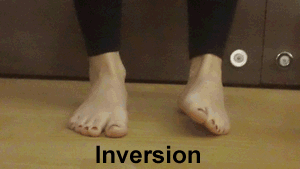 | Hinge Condyloid Gliding |
| Eversion | Movement of the soles lateral so that they face away from each other. |  | Hinge Condyloid Gliding |
| Dorsiflexion | Bending the foot in the direction of the dorsal part of the body (superior surface). | 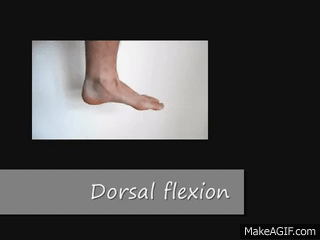 | Hinge Gliding |
| Plantar flexion | Bending the foot in the direction of the plantar surface (sole). |  | Hinge Gliding |
| Supination | Movement of the forearm in which the palm is turned anteriorly or superiorly. | 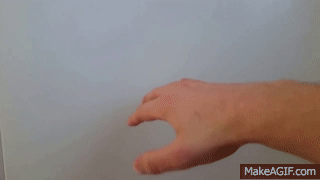 | Hinge Gliding Condyloid Pivot |
| Pronation | Movement of the forearm in which the palm is turned posteriorly or inferiorly. | 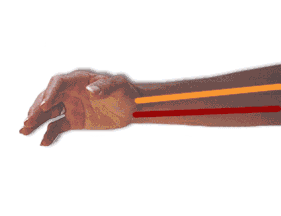 | Hinge Gliding Condyloid Pivot |
| Rotation | The movement of bones in the transverse plane. | Pivot Ball-and-socket Gliding | |
| Opposition | Movement of the thumb across the palm to touch the tips of the fingers on the same | 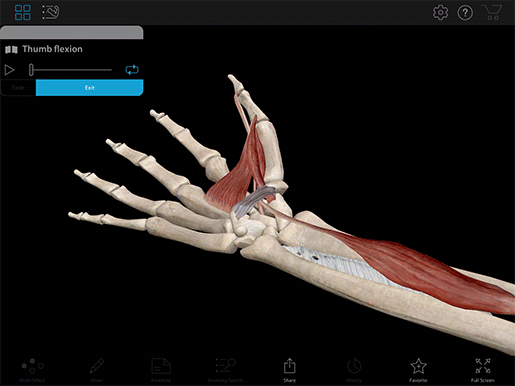 | Hinge Saddle Condyloid |

